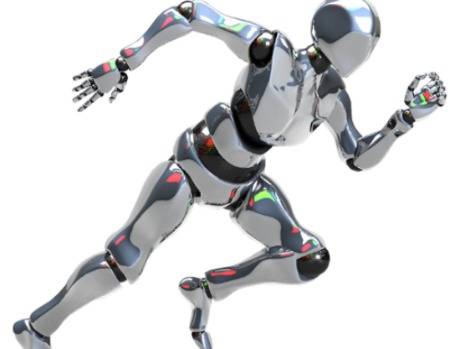OIDM-Based Next-Generation Assisted Reporting Framework

Radiology workflow requires integration of complex data from the imaging informatics ecosystem, including patient details from the electronic health record (EHR), metadata from imaging studies, and findings from radiology reports. However, utilizing data from these sources is challenging, owing to diverse representations for documentation and exchange. The Open Imaging Data Model (OIDM) initiative seeks to define common data structures representing the data associated with clinical radiology exams. The model is centered around radiology reports, and the imaging findings, diagnoses, and recommendations they describe. The goal is to enable the creation of a standard framework for third-party apps relying on these structures to be incorporated into the tools of the imaging informatics ecosystem—the reporting software, the PACS viewer, the worklist manager, the data exploration system.

Standard data structures defined by OIDM can enable automated assistance to radiologists as they create reports, establishing a next-generation assisted reporting framework. The OIDM facilitates developing this framework by providing a standard model for representing and consuming data generated from a variety of sources, including the EHR, current and prior radiology reports, imaging modalities, hospital information systems, and artificial intelligence (AI) applications. Relevant contextual information captured in this model can be processed by assisted reporting scripts to generate commands for a host of radiology workflow actions, such as:
- Insert AI application generated text/measurements in reports
- Suggest changes in the radiology report to account for data context (i.e., patient gender and gender-specific findings)
- Alert radiologists about discrepancies compared to prior reports
- Alert radiologists about discrepancies in the current report (i.e., laterality)
- Notify radiologists about specific clinical questions documented in the EMR
- Activate communication tools to translate emergent findings to clinical action
But the pressing need for adaptable tools capable of integrating seamlessly with evolving technology in the radiology IT ecosystem extends beyond just report generation. The OIDM Project is committed to addressing this need by helping transform other IT tools into robust platforms as well. Such platforms will be able to foster a collaborative environment where any player—individual radiology practices, third-party software vendors, specialty societies—can readily incorporate apps into other tools (such as worklist managers and PACS viewers) that solve clinical problems by enhancing the functionalities available to radiologists during their daily operations.
Central to the OIDM project is the meticulous development of defined data structures and interfaces, which serve as the foundational backbone for hosting a myriad of apps. Apps will be able to be built, grounded in the structures and principles laid out by OIDM, and will function as collaborative hubs that integrate real-time clinical context and help coordinate the radiologist’s activities in specific clinical contexts. The underlying data model is designed to integrate existing standards and approaches to create a coherent, integrated context for joining information across systems and time.
Context-Aware Assistance: A Practical Approach
An essential element of the OIDM project is to enable tools that provide practical support to radiologists as they navigate through their reporting tasks. These integrative apps are capable of offering intelligent, context-aware assistance in several ways. For instance, they can facilitate decision support by tracking the progression of lesions that may necessitate further scrutiny, such as pulmonary nodules. Unlike previous decision support tools, by accessing a patient's previous imaging data, this next-generation of apps can adeptly prevent unnecessary follow-ups for documented stable nodules.
Moreover, the apps can play a critical role in enhancing the completeness of radiological reports. In cases where a radiologist describes an adrenal nodule without specifying the side, the app can identify this gap and prompt the reporting software to request clarification, thus maintaining report integrity. Another functionality is to ensure compliance with payer-required language when particular billing codes are in use, streamlining the billing process and preventing oversights.
Join us at the 2023 Quality and Safety + Informatics Conference on Thursday, October 26th virtually or in San Diego, California, to learn more about the OIDM and how you can help build this framework.
The radiology IT ecosystem is made up of predominantly closed systems which offer specific functionality with limited abilities to integrate new, specialized capabilities. Dr. Alkasab will discuss the Open Imaging Data Model initiative, a project which aims to create the open standards that would underlie the transformation of the reporting tools, workflow managers, and PACS viewers we use into platforms which can host apps developed by third-parties. These apps could be used to deliver specialized, context-aware functionality to users with much more sophistication than the current generation of tools can deliver.
The Radiology report is the face of the radiologist to the patient care team and should always convey clear and actionable findings. Many of these are hidden in the contextual knowledge available to only the radiologist themselves. Brian Bialecki, Director of IT Standards and Interoperability at ACR, will discuss the gaps and possibilities in the OIDM reporting use cases. Radiologists constructing a report need similar support and feedback as provided to clinicians ordering a procedure. Was the referring physician’s question answered? Are actionable findings being acted upon? Are prior findings as easy to provide to a radiologist as relative prior exams? Is an appropriate exam indication provided? ‘Normal’ isn't good enough on its own and OIDM can be the Clinical Decision Support tool to fill in the context.
Radiology reports are data-intensive documents with complex imaging findings, assessments, and recommendations for further clinical care. However, deriving insights from data in radiology reports remains challenging due to heterogeneous reporting structures. Dr. Ali Tejani will discuss how the Radiological Society of North America (RSNA)/American College of Radiology (ACR) Common Data Element (CDE) project provides a data model for encoding radiology findings generated by radiologists, AI applications, or from prior reports. The conversation will present example coding structures using CDE definitions as semantic identifiers within the structure of a Fast Healthcare Interoperability Resource (FHIR) Observation resource to facilitate exchange of information.
Dr. Juluru will provide an FDA perspective clinical decision support software (CDS). He will describe CDS applications that fall within FDA’s regulatory oversight and other applications that fall outside of that oversight.
The OIDM will also be featured at the RSNA 2023 Imaging AI in Practice demonstrations, which showcases emerging technologies and communication standards for AI integration in radiology workflow. One of this year’s demonstrations will highlight an OIDM driven use case for pulmonary nodule management, underscoring the significant workflow efficiency gains of adopting a standard data structure to allow exchange between AI applications, the EHR, and reporting software.
Expanding Functional Horizons Beyond Reporting Tools
Looking ahead, the OIDM project aims to influence a broader spectrum of the imaging IT ecosystem, incorporating facets such as PACS viewers and worklist managers into open platforms capable of hosting specialized apps. These platforms embody the principles established by OIDM, fostering a nurturing ground for a collaborative ecosystem that continually seeks to elevate the utility and efficiency offered to radiologists.
By promoting a collaborative and inclusive environment, the OIDM project hopes to help usher in a new phase of functionality in the field, enhancing the scope and depth of current and coming technological advancements.
OIDM relies on multidisciplinary collaboration with both clinical and technical personas. Interested in getting involved with the OIDM team? Register here to receive newsletters for the latest updates and details for ongoing projects. Members can join working groups and upcoming project meetings, including an ongoing initiative to develop OIDM use cases. Learn more about getting involved here and email the team at info@opendataimaging.org with any questions.
Ali Tejani, MD | Resident Physician | UT Southwestern Medical Center | Co-chair, ACR Resident and Fellow Section AI Subcommittee
OIDM-Based Next-Generation Assisted Reporting Framework
-

You may also like
Major (but Solvable) AI Challenges Get an Assist from ACR ToolsJanuary 11, 2022 | J. Raymond Geis, MDAs radiologists, we strive to deliver high-quality images for interpretation while maintaining patient safety, and to deliver accurate, concise reports that will inform patient care. We have improved image quality with advances in technology and attention to optimizing protocols. We have made a stronger commitment to patient safety, comfort, and satisfaction with research, communication, and education about contrast and radiation issues. But when it comes to radiology reports, little has changed over the past century.